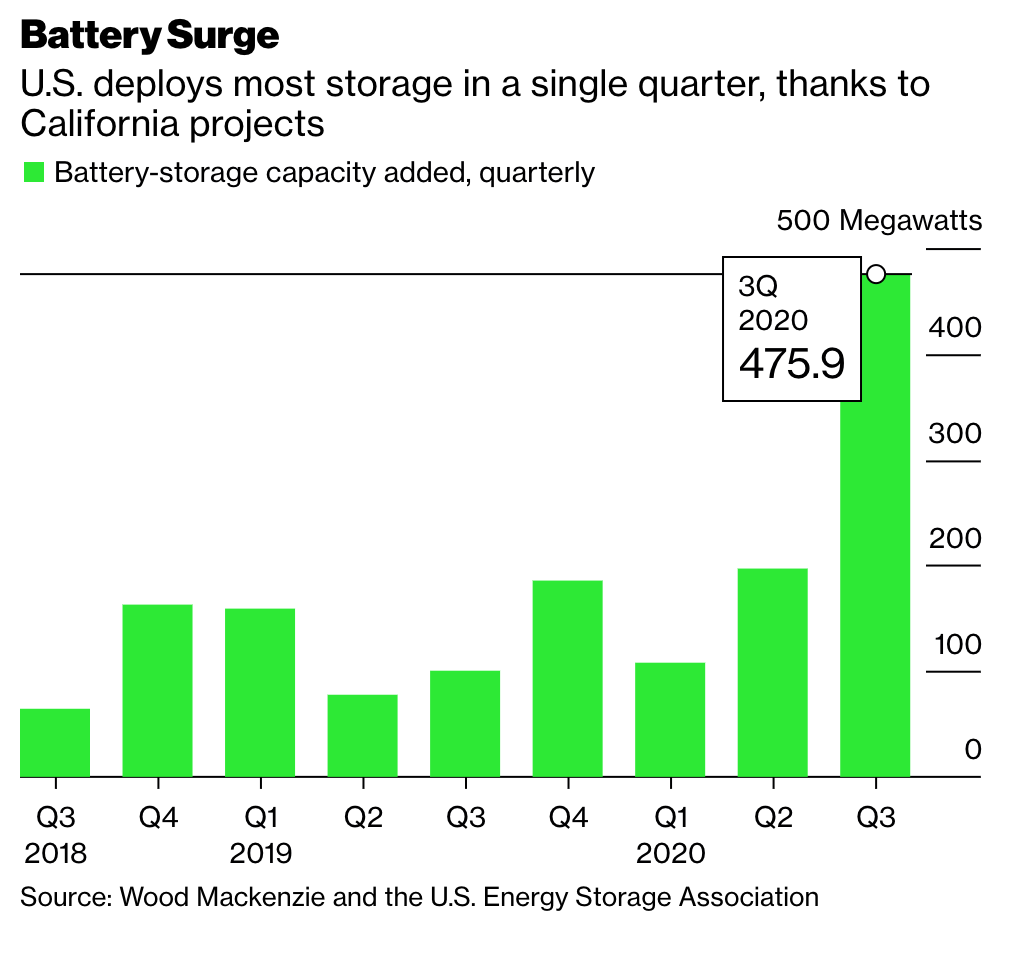Battery storage solutions currently booming in the U.S. power market will reshape the sector facing a new year, as the nation has added nearly 476 megawatts of new storage capacity in 2020’s third quarter.
According to the latest Wood Mackenzie US Energy Storage Monitor report, these solutions increased 240% from the previous quarter of the same year. Projects in California, and Texas were the main reason for this surge.
WoodMac’s report also highlights that total number of deployments are expected to triple in 2021; by 2025, the U.S. market will have 7,5 gigawatts of battery storage capacity newly added, mainly because of 2020’s sixfold growth.


Residential storage solutions, as well as front-of-meter capacity are setting records of their own. The first one with 52 MW and 119 MWh installed during 2020 and marking six straight quarter with unstoppable growth.
On the other hand, front-to-meter storage capacity had a significant surge, thanks to the start of operations of massive projects like LS Power’s Gateway project, which is the largest in the world with 250MWh.
Recommended for you: NextEra Energy secures 4 GW in solar modules from Trina Solar
Battery storage booming, California an Texas at spearhead
As we reported previously, PG&E’s just expanded its battery storage portfolio for California; the state’s Public Utilities Commission approved the procurement of 716 MW of further storage capacity to come online in August 2021, until August 2023.
Also, Stem, global leader in smart energy and storage solutions driven by artificial intelligence, was awarded with 38 MW of smart energy storage capacity for low-income communities in California. The award was made by the California Self-Generation Incentive Program in its December 2020 edition.
On Texas the growth has been substantial too. Just recently FlexGen, one of Texas’ top energy storage providers, teamed up with Contemporary Amperex Technology Limited (CATL) for the development and manufacturing of 110 MWh battery projects.
All of this growth has been also prompted by a decrease in battery storage costs. According to the Energy Information Administration, average energy capacity cost of utility-scale battery storage has decreased 70%.

